Your Ultimate Guide to Costa Rican Cuisine
As an Amazon Associate I earn from qualifying purchases.
Costa Rican cuisine is a unique blend of fresh ingredients and cultural influences, including indigenous, Spanish, and African flavors. If you’re into food or just curious about local culture, here’s a quick guide to the must-try dishes and culinary experiences of Costa Rica!
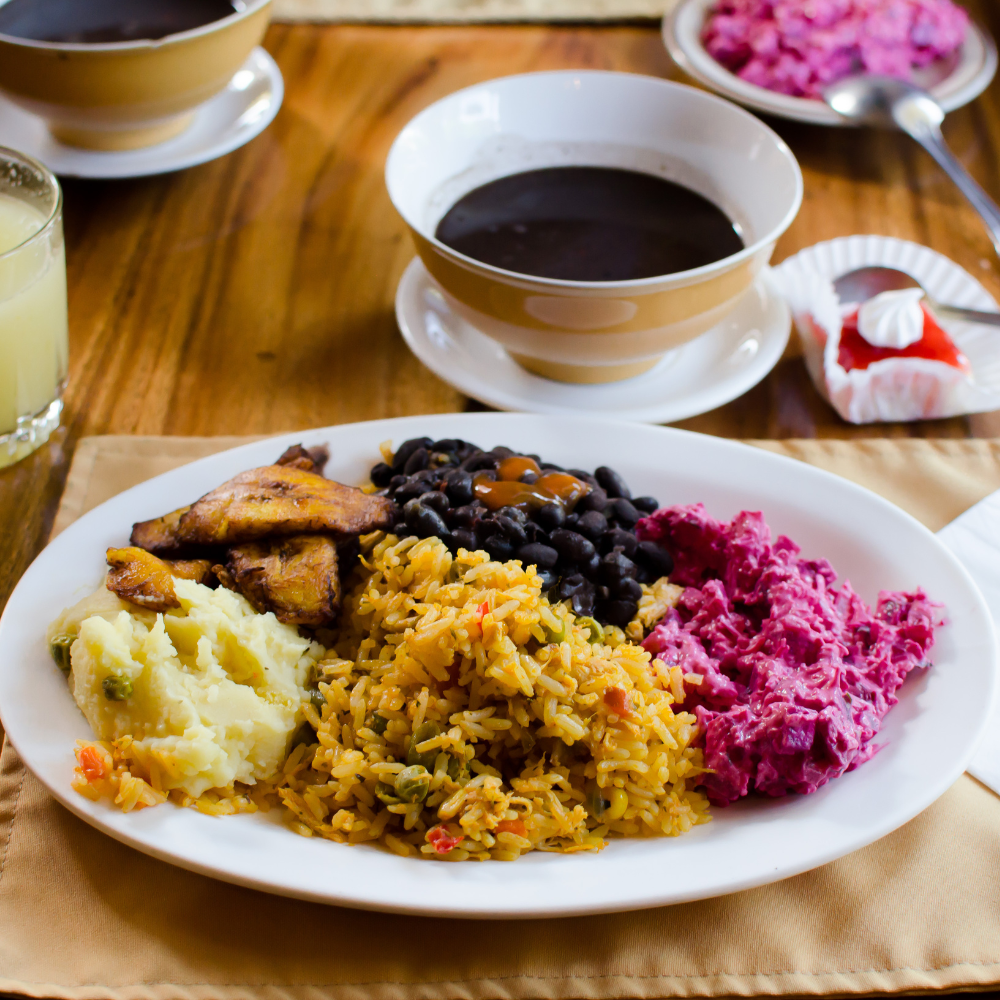
Costa Rica is famous for its coffee, which is some of the best in the world. You’ll find it everywhere, from bustling markets to cozy cafes. Also, make sure to try the variety of tropical fruits like mangoes, guavas, and passionfruit – they’re delicious!
For breakfast, don’t miss gallo pinto, a dish made with rice and beans, served with scrambled eggs and plantains. Another favorite is casado, a lunch dish with rice, beans, salad, plantains, and your choice of meat or fish.
Seafood lovers should try ceviche, a dish made with fresh fish marinated in citrus juices, tomatoes, onions, and cilantro. And if you’re into hearty stews, olla de carne is a must-try. It’s a beef stew with root vegetables and herbs.
For drinks, try a guaro sour, a cocktail made with guaro (a local spirit), lime juice, and sugar. And for dessert, indulge in tres leches cake, a sweet treat soaked in three types of milk.
Whether you’re exploring the streets of San José or relaxing on the beaches of Manuel Antonio, Costa Rica offers a culinary adventure you won’t forget. So dive in and enjoy the diverse flavors of this beautiful country!
What Is The History Of Costa Rican Cuisine?
Costa Rican cuisine, often characterized by its simplicity and reliance on fresh, locally sourced ingredients, reflects a blend of cultural influences and the country’s rich biodiversity. The history of Costa Rican cuisine is a tapestry woven from indigenous, Spanish, African, and more recently, other international influences, each adding its own flavors, techniques, and ingredients to the mix.
Pre-Columbian Period
Before the arrival of the Spanish in the 16th century, the indigenous peoples of what is now Costa Rica relied heavily on the rich bounty of their environment. Their diet was primarily based on corn, beans, and squash, often referred to as the “three sisters” for their complementary growing patterns and nutritional balance. These staples were supplemented with tropical fruits, such as avocados, papayas, and pineapples, as well as root vegetables like cassava (yuca) and malanga. Hunting and fishing provided additional protein sources, rounding out a diverse and nutritionally rich diet.
Spanish Colonization
The Spanish colonization introduced new ingredients and livestock to Costa Rica, including rice, wheat, beef, pork, chicken, and dairy products, significantly transforming the local diet. Citrus fruits, sugarcane, and spices were also introduced, adding new flavors to the culinary landscape. The Spanish influence is evident in the adoption of rice and beans as staples, the use of cilantro, garlic, and onions for flavoring, and the introduction of dairy products into the diet.
African Influence
African influence on Costa Rican cuisine came primarily through the African slaves brought by the Spanish to work on the cocoa plantations. They introduced techniques and ingredients that further diversified the culinary landscape.
Coconut, used in both sweet and savory dishes, and techniques like deep-frying, are notable contributions from African culinary traditions. Dishes such as rondón, a coconut milk-based seafood stew, highlight the blend of African culinary techniques with indigenous and Spanish ingredients.
Modern Influences
In the 20th and 21st centuries, Costa Rican cuisine continued to evolve, incorporating influences from other Latin American countries, North America, and even Europe and Asia. This globalization of the diet has introduced a variety of foods and preparation methods, although traditional dishes remain a staple of the Costa Rican diet.
Today’s Costa Rican Cuisine
Today, Costa Rican cuisine is celebrated for its emphasis on fresh, wholesome ingredients, including a wide variety of fruits and vegetables, lean meats, and seafood. Traditional dishes like gallo pinto (rice and beans), casado (a platter with rice, beans, salad, plantains, and protein), and ceviche (fresh seafood marinated in lime juice) are cherished, embodying the country’s agricultural heritage and multicultural influences.
The history of Costa Rican cuisine is a reflection of the country’s multicultural history, geographical diversity, and the adaptability and creativity of its people. It stands as a testament to the ways in which food can bring together diverse traditions to create a unique and flavorful culinary identity.
What Are The Most Popular Costa Rican Side Dishes?
Costa Rican cuisine is rich in flavorful side dishes that complement the main courses and add depth to the dining experience. Some of the most popular Costa Rican side dishes include:
- Gallo Pinto: While often eaten as a main dish for breakfast, gallo pinto can also be served as a side dish throughout the day. It’s a mixture of rice and beans seasoned with onions, peppers, and spices, giving it a savory and aromatic flavor.
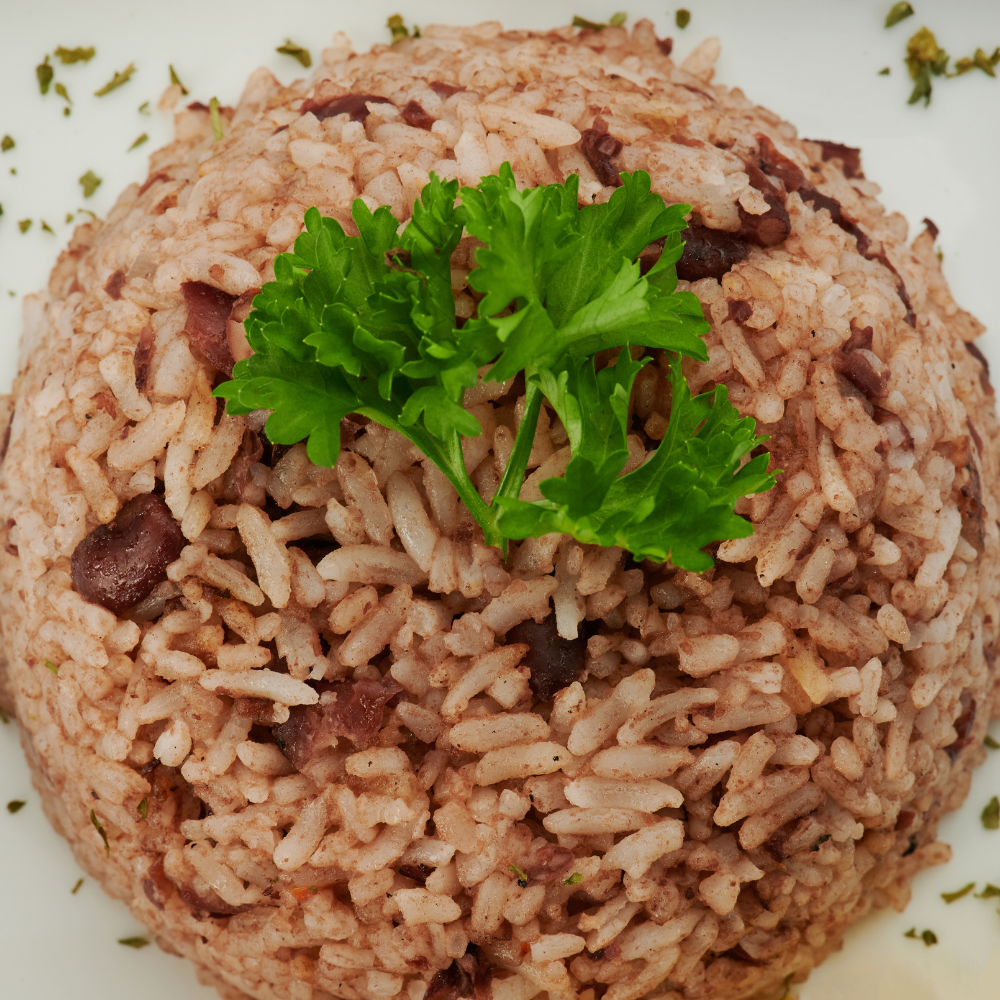
- Platanos Maduros: Sweet and ripe plantains are a staple side dish in Costa Rica. They’re usually fried until golden brown, creating a caramelized exterior and a soft, tender interior. Platanos maduros add a touch of sweetness to any meal and pair well with savory dishes.

- Picadillo de Verduras: This colorful medley of mixed vegetables is sautéed with onions, garlic, and herbs, creating a vibrant and flavorful side dish. It often includes ingredients like carrots, green beans, bell peppers, and potatoes, providing a nutritious accompaniment to any meal.

- Ensalada de Repollo: Also known as cabbage salad, this simple yet refreshing side dish is made with shredded cabbage, carrots, onions, and cilantro, tossed with a tangy dressing of lime juice, vinegar, and oil. Ensalada de repollo adds a crisp and crunchy texture to meals and balances out richer flavors.
- Tostones: Green plantains are sliced, fried, and then smashed before being fried again to create tostones. These crispy and savory plantain chips are a popular side dish or snack in Costa Rica, often served with a dipping sauce like chimichurri or salsa Lizano.
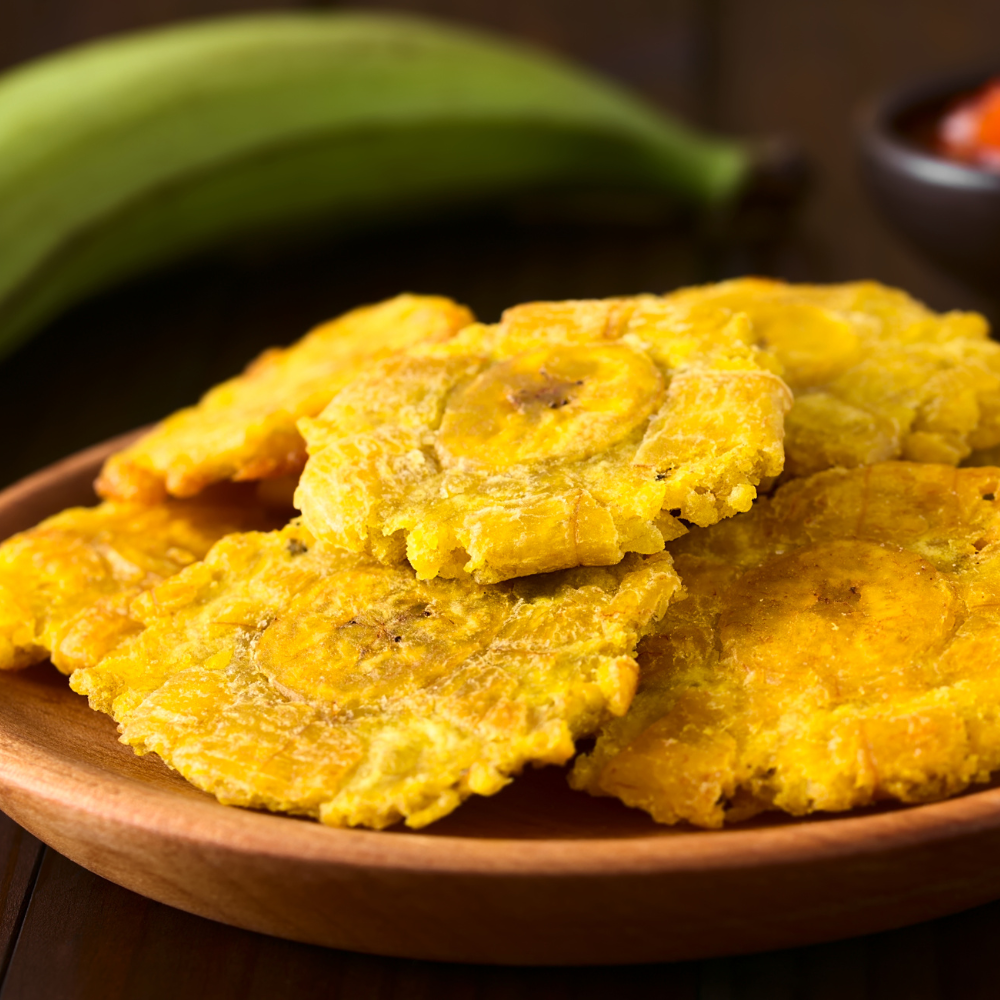
- Yuca Frita: Yuca, or cassava, is a starchy root vegetable that’s boiled and then fried until crispy. Yuca frita is similar in texture to French fries but has a slightly sweeter and nuttier flavor. It’s a popular side dish or appetizer enjoyed throughout Costa Rica.
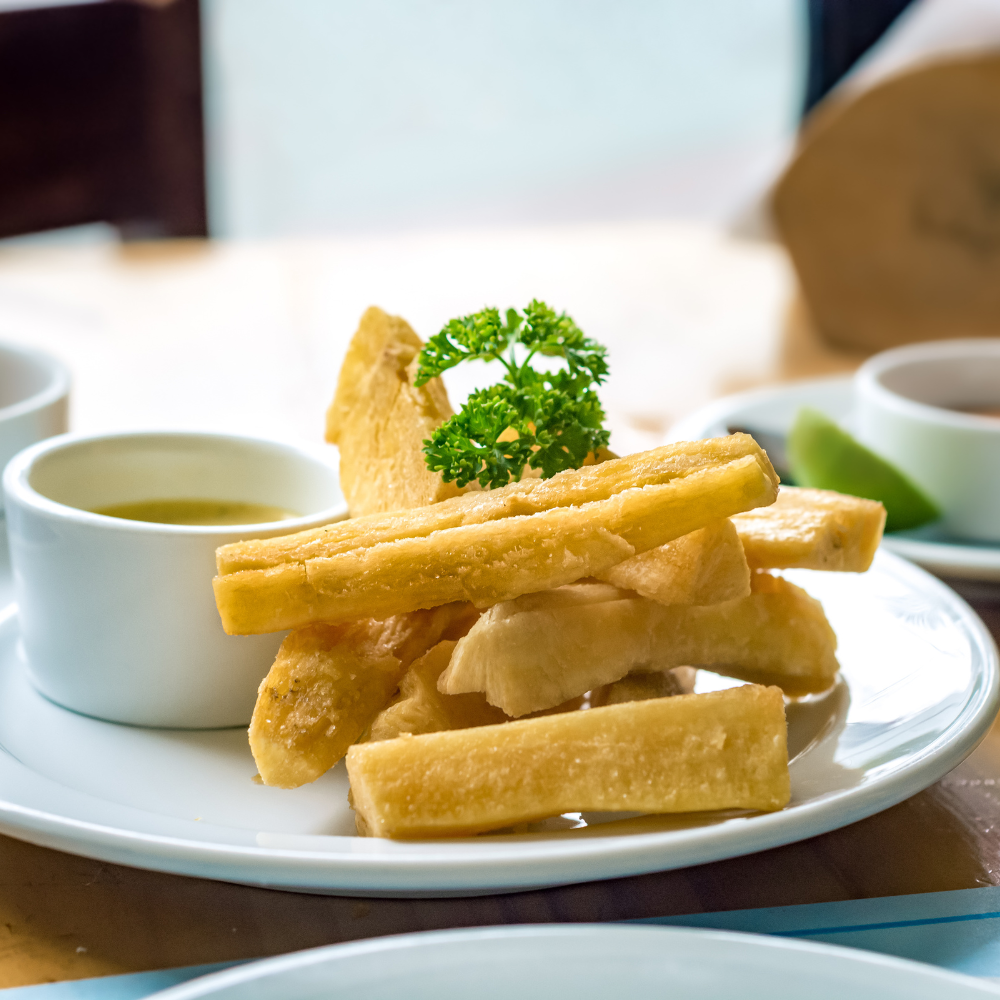
These are just a few examples of the delicious side dishes you can expect to encounter while dining in Costa Rica. Each dish showcases the country’s vibrant culinary heritage and adds depth and variety to the overall dining experience.
What Are The Most Popular Costa Rican Dishes?
- Casado: Experience the essence of a Costa Rican lunch with casado, a balanced plate featuring rice, beans, salad, plantains, and a choice of meat (chicken, fish, pork, or beef) or a vegetarian option.

- Ceviche: Fresh and citrusy, Costa Rican ceviche typically features locally caught fish or seafood marinated in lime juice with onions, cilantro, and peppers, offering a refreshing treat.
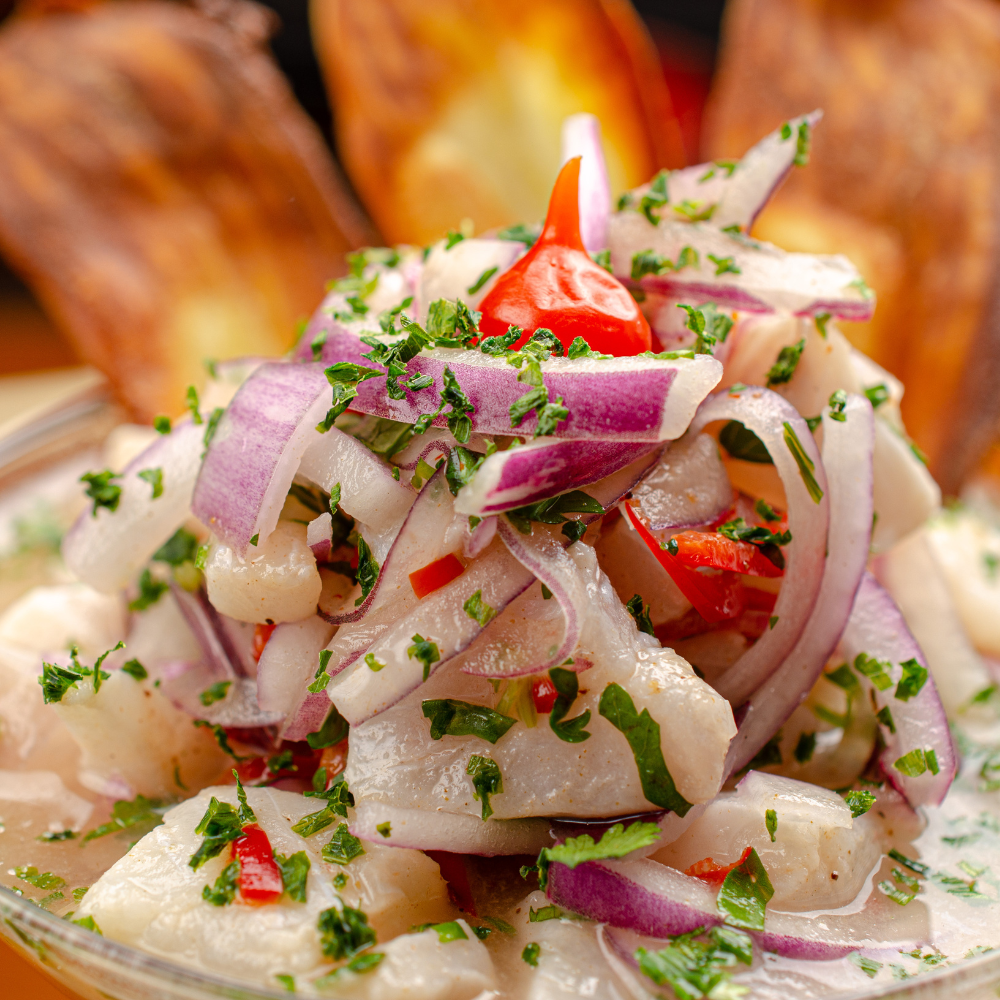
- Arroz con Leche: Satisfy your sweet tooth with this beloved dessert. A creamy rice pudding flavored with cinnamon and condensed milk, it’s a comforting end to any meal.

What Are The Most Popular Costa Rican Desserts?
- Arroz con Leche: A comforting rice pudding made with rice, milk, sugar, cinnamon, and sometimes lemon zest. It’s creamy, sweet, and often served as a homely dessert.
- Tres Leches Cake: A moist cake soaked in three types of milk: evaporated milk, condensed milk, and heavy cream. It’s a favorite for celebrations and a testament to the love of dairy in Costa Rican cuisine.
- Flan: A creamy caramel custard that’s popular across Latin America. In Costa Rica, it’s enjoyed for its smooth texture and rich flavor, often infused with vanilla or coconut.
- Miel de Coco: A simple yet delicious dessert made with coconut milk, sugar, and spices, reduced to a thick syrup. It’s often served over rice or enjoyed as a sweet treat on its own.
- Mazamorra: A corn-based pudding that’s similar to a porridge, made from purple corn flour, water, sugar, and spices like cinnamon and clove. It’s a rustic and satisfying dessert.
- Cajetas: Traditional Costa Rican confections made from sugar, condensed milk, and sometimes added flavors like coconut, dulce de leche, or fruit. These small sweets are a favorite among those with a sweet tooth.
- Sopa Borracha: A festive dessert often served at weddings and celebrations, “drunken soup” consists of sponge cake soaked in a syrup made with sugar, rum, and spices, often garnished with prunes and almonds.
- Queque Seco: A Costa Rican style pound cake, known for its dense, buttery texture and often flavored with vanilla, lemon zest, or even rum. It’s a perfect companion to coffee or tea.
Where Can You Experience Costa Rican Cuisine?
- Coffee Plantation Tours: Costa Rica’s world-renowned coffee can be experienced first-hand on a plantation tour, where you can learn about the cultivation and processing of coffee beans, followed by a tasting session.
- Chocolate Making Workshops: Dive into the world of chocolate with a hands-on workshop, exploring the journey from cacao bean to chocolate bar, highlighting Costa Rica’s rich tradition of chocolate making.
- Local Farmers’ Markets: Visit a local feria (farmers’ market) to immerse yourself in the vibrant colors and flavors of Costa Rican produce, from exotic fruits to fresh vegetables, a testament to the country’s agricultural bounty.
Exploring Costa Rican cuisine is an adventure in itself, offering a delicious way to connect with the country’s culture, traditions, and people. From hearty meals that fuel your explorations to sweet treats that delight your senses, Costa Rica’s culinary landscape is as diverse and welcoming as its natural wonders.
As you dive into Costa Rican cuisine, you’ll discover that food is not just about sustenance; it’s a celebration of life and community. Sharing a meal with locals offers a glimpse into their daily rhythms and cherished traditions. Whether you’re dining at a local eatery or enjoyig a home-cooked meal with a Costa Rican family, each bite tells a story of resilience, creativity, and hospitality.
The ingredients used in Costa Rican cooking also reflect the country’s rich biodiversity. From the lush rainforests to the fertile volcanic soil, Costa Rica boasts an abundance of fresh produce, seafood, and meats. This proximity to nature not only ensures the freshness and quality of the ingredients but also inspires chefs to innovate and experiment with flavors.
Food continues to play a central role in Costa Rican celebrations and festivals. Whether it’s the lively atmosphere of a fiesta or the solemnity of a religious ceremony, food brings people together, fostering bonds and strengthening connections across generations.
So, as you embark on your culinary journey through Costa Rica, prepare to be enchanted by the flavors, aromas, and stories that await you. Each meal is not just a nourishment for the body but a feast for the soul, leaving you with memories that will last a lifetime.

